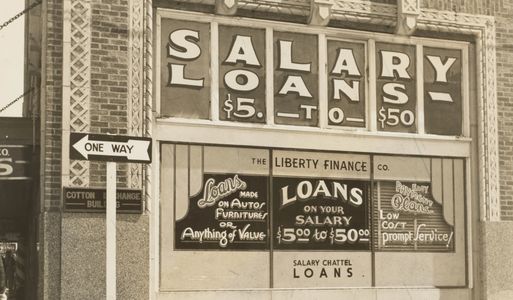Our Vision
Our Affiliates
Our Mission
We at IFDRE believe in creating knowledge via research and sharing knowledge via various educational outlets. Shared knowledge advances awareness and awareness leads the action. Informed action to change. A change for a better world.
Our Mission
Our Affiliates
Our Mission
Our non-profit organization aims at helping individuals and businesses to identify signs of financial distress and understand how to better prepare for, properly manage, and recover from financial difficulties.
Our Affiliates
Our Affiliates
Our Affiliates
We bring together the expertise of attorneys, professors, and industry professionals. The Institute works with qualified students to provide research assistantship opportunities.
FINANCIAL DISTRESS

Liquidity Crisis
A crisis of liquidity arises from shortage of funds available to cover immediate obligations. Liquidity crisis may be temporary and does not necessarily reflect systematic financial or other issues. Liquidity crisis is often imposed by external factors. For example, unexpected temporary disruption of the source of income, extraordinary expenses, or dried-up short-term borrowing may all lead to a cash crunch.

Fundamental Insolvency
Systematic issues, such as high leverage or non-sustainable business model, lead to more serious and protracting financial issues that lead to fundamental insolvency. There is no easy fix or quick patch that may have, but rather deep changes are required to get that broken business or personal financial affairs on track.

Bankruptcy
Reorganization is often not possible without forced arrangements with creditors who might be interested in getting their money back rather than in the future and/or well-being of their debtor. Bankruptcy protection offers companies and individuals sometimes much needed second chance to breath new life in their may or may not work. Then liquidation of assets and obligations for an entirely fresh start might be the only option.
INDIVIDUAL BANKRUPTCY
Chapter 7
Chapter 13
Chapter 13
Chapter 7 is known as liquidation. It is available to single persons and married couples. A debtor income and expenses must satisfy the Means Test. She must complete credit counseling before the filing. Over 90 % of the Chapter 7 cases are "no assets" filings without any distribution to creditors.
Chapter 13
Chapter 13
Chapter 13
Chapter 13 is known as "wage earner" bankruptcy. Debtors must satisfy overall debt and secured debt limits and complete credit counseling before filing. Debtors can repay certain obligations, catch up on mortgage and car payments, pay off delinquent taxes and domestic support obligations.
Business Bankruptcy
Liquidation
Reorganization
Reorganization
Chapter 7 for business means that all firm's assets are liquidated and proceeds are distributed among classes of creditors in a priority established by the Bankruptcy Code. Even though business entities can file for chapter 7, unlike individuals, entities do not receive a discharge.
Reorganization
Reorganization
Reorganization
Chapter 11 filing initiated the process of business reorganization. Within a short period of time debtor must propose a reasonable repayment plan and call for creditors voting on the issues of repayment, treatment and other important matters. Some companies file for protection more than once.
Small Business
Reorganization
Small Business
Subchapter 5 is a relatively novice approach available for small businesses. It removes several major formalities of regular Chapter 11 and allows debtor to remain in possession of assets, continue operations while efficiently reorganizing it debts. The creditors don't have to approve.
Do BANKS GO BANKRUPT?
Once in a while even banks go belly up. Bankruptcy in the banking system is a serious concern for a few reasons. Herding behavior fuels bank runs and contagion. Bank runs are curbed by deposit insurance to some degree. However, if a bank fails, it rarely fails alone. When they fail in bunches, it leads to systemic crisis with spillovers onto real economy. Regulators become concerned and get involved. They attempt to prevent liquidation via close monitoring, advising, and even bailouts. Sometimes, regulators force acquisitions of less healthy institutions by the more stable counterparts.
RECOVERY
While financial research and education help understanding and avoiding financial distress, life still happens. It is good to keep in mind that financial issues eventually go away. skies clear after the storm and life gets back to normal. Individuals and companies alike bounce back. Examples of companies that filed for bankruptcy include General Motors, Ally Financials, Kodak, American Airlines and many more among the names you've heard so many times. Among the famous people who went bankrupt are Abraham Lincoln, Milton Hershey and Walt Disney. Even municipalities go broke and yet they are still around. Detroit and Harrisburg are some well-known examples. Robust and progressive bankruptcy process encourages entrepreneurship, protects creditors' and investors' rights, provides orderly escape from financial difficulties and promotes economic development.
Stay in Touch
Sign up to hear from us about news and events.
Copyright © 2020 Institute for Financial Distress Research and Education
All Rights Reserved.
Powered by GoDaddy Website Builder
This website uses cookies.
We use cookies to analyze website traffic and optimize your website experience. By accepting our use of cookies, your data will be aggregated with all other user data.